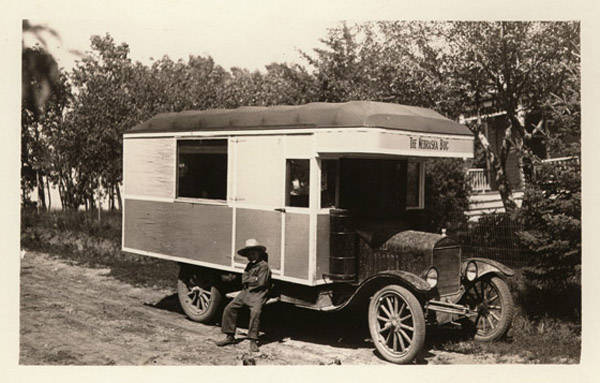Long distance travel in the early days of the automobile was difficult, and comforts along the way were few. Motorists pitched their own tents and cooked their own meals in the auto tourist camps that soon sprang up along the nation’s roads. Some were free; others were operated by a commercial businessman. Pay camps, with more conveniences, soon became common.
The relative advantages and disadvantages of the free auto camp for its sponsoring town were discussed by the magazine Trade Exhibit (Omaha) on October 1, 1926: “There is a great difference of opinion about the merits of the free camp. Some towns have gotten away from it, claiming that it brought motor tramps who hung around, in some cases even living on the town. . . .
“Certainly in a town of any size, where many tourists stop, it is almost essential to have some sort of supervision. This costs money. If the town feels that the benefits derived offset the expense and the undesirable features, then it undoubtedly pays to continue the free camp.
“There is no question but that a nice camp does make a favorable impression on the large number of tourists who are not of the ‘tramp’ variety. The majority of them reciprocate by making purchases in the town-gasoline and oil if nothing else, but usually groceries as well. Some of them would rather pay and have the benefit of the added protection. Others would rather seek the free camp.”
The Trade Exhibit closed its article on the advantages and disadvantages of the free auto camp with the following poem skewering the typical “Flivver Hobo”:
- He owns a dented tin machine,
- A roll of ragged bedding,
- Perhaps sufficient gasoline
- To last to where he’s heading;
- Some pots and pans, a dirty tent,
- Some rusty spades and axes-
- He needs no home, he pays no rent,
- He never heard of taxes!
- The Flivver Hobo is a tramp
- I met in hordes last summer,
- At many a town’s Free Auto Camp-
- A most accomplished bummer.

John Nelson’s photograph depicted a homemade auto camper.
NSHS RG3542.PH:124-01



